
The Atari 2600 is a home video game console developed and produced by Atari, Inc. Released in September 1977 as the Atari Video Computer System, it popularized microprocessor-based hardware and games stored on swappable ROM cartridges, a format first used with the Fairchild Channel F in 1976. The VCS was bundled with two joystick controllers, a conjoined pair of paddle controllers, and a game cartridge—initially Combat and later Pac-Man. Sears sold the system as the Tele-Games Video Arcade. Atari rebranded the VCS as the Atari 2600 in November 1982, alongside the release of the Atari 5200.

Jeff Minter is an English video game designer and programmer who often goes by the name Yak. He is the founder of software house Llamasoft and has created dozens of games during his career, which began in 1981 with games for the ZX80. Minter's games are shoot 'em ups which contain titular or in-game references demonstrating his fondness of ruminants. Many of his programs also feature something of a psychedelic element, as in some of the earliest "light synthesizer" programs including Trip-a-Tron.
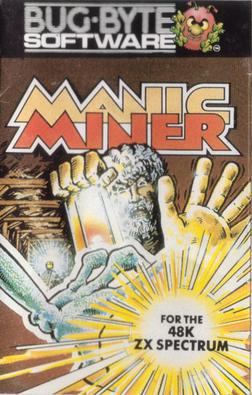
Manic Miner is a platform game written for the ZX Spectrum by Matthew Smith. It was published by Bug-Byte in 1983, then later the same year by Software Projects. The first game in the Miner Willy series, the design was inspired by Miner 2049er (1982) for the Atari 8-bit computers. Retro Gamer called Manic Miner one of the most influential platform games of all time, and it has been ported to numerous home computers, video game consoles, and mobile phones.

David Crane is an American video game designer and programmer. Crane grew up fascinated by technology and went to DeVry Institute of Technology. Following college, he went to Silicon Valley and got his first job at National Semiconductor. Through his friend Alan Miller he learned about potential video game design work at Atari, Inc. and began work there in 1977.

Spelunker is a 1983 platform video game developed by Timothy G. Martin of MicroGraphic Image. It is set in a cave, with the player starting at the cave's entrance at the top, and the objective is to get to the treasure at the bottom.
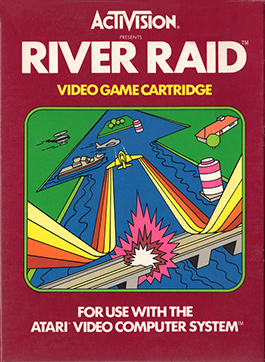
River Raid is a 1982 shoot 'em up video game developed and published by Activision for the Atari 2600. Designed by Carol Shaw, the player controls a fighter jet over the River of No Return in a raid behind enemy lines. The goal is to navigate the flight by destroying enemy tankers, helicopters, fuel depots and bridges without running out of fuel or crashing.

Pitfall II: Lost Caverns is a video game developed by David Crane for the Atari 2600. It was released in 1984 by Activision. The player controls Pitfall Harry, who must explore in wilds of Peru to find the Raj Diamond, and rescue his niece Rhonda and their animal friend Quickclaw. The game world is populated by enemies and hazards that variously cause the player to lose points and return to a checkpoint.
Brian Howarth is a British video game designer and computer programmer. He wrote many interactive fiction computer games in the early 1980s in a series called Mysterious Adventures. He was born in Blackpool in 1953.

Datamost was a computer book publisher and computer game company founded by David Gordon and based in Chatsworth, California. Datamost operated in the early 1980s producing games and other software mainly for the Apple II, Commodore 64 and Atari 8-bit computers, with some for the IBM PC. It also published educational and reference materials related to home computers and computer programming.

Forbidden Forest is a game designed by Paul Norman, published by Cosmi Corporation in 1983 for the Commodore 64 and Atari 8-bit computers.

Aztec Challenge refers to either of two early action video games published by Cosmi, as well as two subsequent remakes. In all game versions the player takes control of a running Aztec warrior. The first was a side-scrolling platform-jumping game created by Robert Tegel Bonifacio and released in 1982 for Atari 8-bit computers. Subsequently, a different game with the same title and overall theme was created by Paul Norman and released for the Commodore 64. It includes a level in a modified-first-person 3D-style.
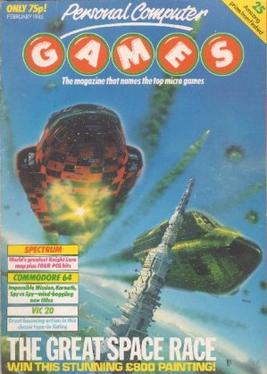
Personal Computer Games was a multi-format UK computer games magazine of the early/mid-1980s published by VNU.

Tutankham is a 1982 arcade video game developed and released by Konami and released by Stern in North America. Named after the Egyptian pharaoh Tutankhamun, the game combines a maze shoot 'em up with light puzzle-solving elements. It debuted at the European ATE and IMA amusement shows in January 1982 before releasing worldwide in Summer 1982. The game was a critical and commercial success and was ported to home systems by Parker Brothers.
The Dovetail Group, Inc. was one of the earliest video game developers to specialize in music video games. The Dovetail Group's products were designed for systems such as the Atari 8-bit computers and the Commodore 64. Notable games developed by The Dovetail Group include Halftime Battlin' Bands (1984), Coco-Notes (1984), and Movie Musical Madness (1984). These games represent some of the earliest examples of the music management subgenre of music video games.
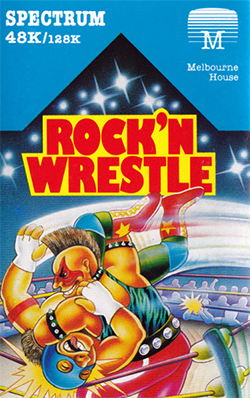
Rock'n Wrestle is a professional wrestling video game released in 1985 for the ZX Spectrum, Amstrad and Commodore 64 8-bit home computers, and as Bop'N Wrestle in 1986 for DOS by Mindscape.

Drelbs is a maze video game written by Kelly Jones for Atari 8-bit computers and published by Synapse Software in 1983. An Apple II port by Jonathan Tifft was released the same year. A Commodore 64 version followed in 1984 implemented by Miriam Nathan and William Mandel. The objective is to move the walls of the maze to make boxes. Some reviewers found the overall collection of elements to be eccentric and unique.

Chopper Hunt is a side-view shoot 'em up written by Tom Hudson and published by Imagic in 1984 for Atari 8-bit computers and Commodore 64. It was one of the last games from Imagic before the company went out of business. Chopper Hunt is an enhanced version of the Atari 8-bit game Buried Bucks released by ANALOG Software in 1982. In both games, the player files a helicopter that uses bombs to unearth buried items. Contemporaneous reviews were mixed.

Thrax Lair is a vertically scrolling shooter designed by Randy Turner and published by Rantom Software in 1982 for Atari 8-bit computers. The game is similar in concept to Caverns of Mars from 1981. A version of Thrax Lair for the Commodore 64 was planned, but never released.
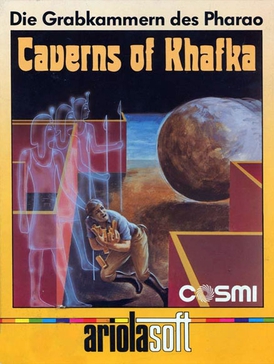
Caverns of Khafka refers to either of two platform video games published by Cosmi. In both game versions the player takes control of a treasure hunter in search for the fabled treasure of Pharaoh Khafka. The first game was created by Robert T. Bonifacio and released in 1983 for Atari 8-bit computers. Subsequently, a different game with the same title and overall theme was created by Paul Norman and released for the Commodore 64 in 1984.

















